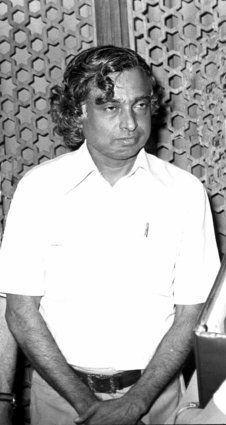
The intellectual merit of the phrase "speak truth to power" is confined today to the world of rhetoric. The reasons are two-fold.
First, there is no truth; there are truths—an ancient philosophical canon re-popularised by 20 century French philosophers. Second, power is relatively distributed among social groups. Hierarchy is a ladder with a series of steps. Here cooperation-competition between those on the last two is as much as that between those on the first two. The election of Ram Nath Kovind to the highest constitutional office of India must be read in this context.
Kovind's ascent to Raisina Hill tells... upwardly mobile individuals among SCs that the "Yes We Can" narrative is real in India.
In a recent article, Sudha Pai has divided the scheduled castes (SCs) into three electoral divisions. But I believe that the political behaviours of SCs can be traced to their economic-cultural identities which are of four types at least: (a) upwardly mobile (b) Hindu subaltern (c) emerging radicals (d) decadent grandees. The election of Ramnath Kovind, member of Koli community from Paraukh village in Kanpur Dehat, is differently symbolic to each of these groups.
Upwardly mobile
The SCs have benefitted in many ways from the industrialisation-urbanisation of India. Compared to the small and homogeneous village setting, the urban milieu allows anonymity. The chance for ascriptive status to shadow achieved status is less here. Social histories of industrial-urban centres, like those of Kolar Goldmines of Karnataka or the patrician streets of erstwhile Calcutta, provide earliest evidence. They attest that natives across births could share the urban space and were subject to same punishments and rewards in the colonial economy.
A large number from the SCs have achieved upward mobility then onwards. An example is the case of Tina Dabi who topped the civil service examination in 2015. The parents of the young woman from New Delhi have served the central bureaucracy. Kovind's ascent to Raisina Hill tells the Dabis and other upwardly mobile individuals among SCs that the "Yes We Can" narrative is real in India.
Hindu subaltern
Despite Babasaheb Ambedkar's clarion call for conversion, most SCs still identify as Hindus, but continue to be oppressed. Exaggerated reports and "journalistic" bias notwithstanding, the brutalities of casteist zealots continue to shock and shame this nation. However, these fanatics are present on every step of the hierarchal staircase of caste. The concept of "dominant caste" formulated by MN Srinivas clarifies that the perpetrators are not positioned only on the upper end of the caste ladder.
If the BSP's treasury-emptying statue symbolism instilled pride among SCs then why would the BJP's frugal and bigger message not have a more positive impact?
From a one-room shack in his ancestral village, Kovind's entry into the 750-room presidential estate tells myriad Hindu subalterns a telling tale of emergence. It is a shot in the arm for peoples who have strived for dignity at any repressed location—top or bottom—of the caste ladder. Of course, reactive "dissenters" have derided Kovind's rise as 'symbolic'. But if the BSP's treasury-emptying statue symbolism instilled pride among SCs then why would the BJP's frugal and bigger message not have a more positive impact?
Emerging radicals
Radicals are the motors of social change. An example of this category among the SCs is the Bhim Army led by the charismatic Chandrasekhar. His bandaged but raised hand at Jantar Mantar, his challenge to the Saharanpur Thakurs, his twirl of the moustache and his proud proclamation of "The Great Chamaar" are a decisive break from the routine hue of maudlin politics.
Kovind as supreme commander of the Indian Army is unlikely to impress the emerging radicals. They are the agency which is built into structure and these bands must keep the government on its toes. But as the "scratched off" accusations against Ambedkarites and Marxists in Rohith Vemula's suicide note indicate, these rebels are all too human too. They are in danger of what Max Weber called the routinisation of charisma.
Decadent grandees
Former judge CS Karnan, whose theatrics were a widespread embarrassment, represents the decadent grandees among the SCs. His lordship played the caste card and claimed victimhood after the Supreme Court sentenced him for contempt for his unsubstantiated tirade against judges of the apex court.
Unlike the other economic-cultural groups among the SCs, the decadent grandees depend on the construction of "absolute victimhood" to draw political leverage...
Unlike the other economic-cultural groups among the SCs, the decadent grandees depend on the construction of "absolute victimhood" to draw political leverage and deflect attention from their shortcomings.
***
The continued attempt towards a rigid and inflexible imagination of caste is in line with the orientalist machineries of knowledge production. Nicholas Dirks's seminal text Castes of Mind: Colonialism and the Making of Modern India (2001) has established that such depiction was a stereotype designed to legitimise colonial occupation as "civilising mission" and as "the white man's burden". The eradication of caste will be incomplete if this burden is not shaken off the Indian mindscape.
As the OBC-SC duo of Prime Minister and President walk down the Mughal Gardens, they will see that some flowers hesitate to grow there. They must tend to them with greater care.
